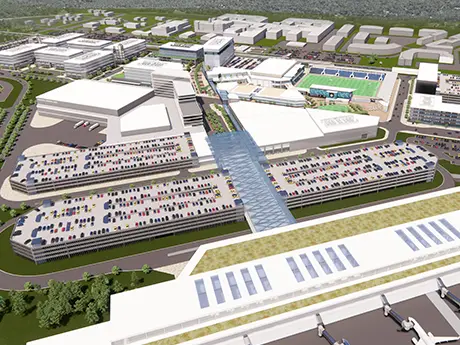Midway Crossing, a US$ 2.8bn mixed-use project on Long Island, an expansive, densely populated island in southeastern New York State, has been launched by a public-private collaboration between The Town of Islip, Suffolk County, and JLL.
This comes after the Long Island Regional Planning Council authorized the proposal, which will be the greatest commercial or residential construction on Long Island in the previous 50 years. It will cover a total of approximately 179 acres and offer applications such as life sciences, healthcare, and hospitality, as well as a conference centre and typical retail, restaurant, and entertainment space.
The project site is close to Long Island MacArthur Airport and the Long Island Rail Road (LIRR) Ronkonkoma Station, creating Midway Crossing as a multimodal transit hub. Under the present construction proposal, the airport and railway station would be connected through a 1,800-foot corridor.
Expectations for the Midway Crossing mixed-use project on Long Island
When completed, the development team anticipates that the Midway Crossing will create more than US$ 4.5bn in yearly economic effect. The development team also intends to perform numerous infrastructure improvements at the Long Island MacArthur Airport, which might result in an extra-economic effect of up to US$ 1.9bn.
Also Read: Plans Announced for Construction of 270 Park Avenue, JPMorgan New New York Headquarters
Aside from the economic benefits, the Midway Crossing partners highlighted the chance to enhance the area’s tourist sector and retain younger sections of the community as important driving motivations behind the construction.
According to a recent Suffolk County study, two out of every three young inhabitants aim to leave the region over the next five years owing to the high cost of living, which can only be supported by occupations with specific minimum salary levels. To that aim, Midway Crossing is anticipated to directly produce over 9,000 job opportunities, including over 4,000 in the STEM (science, technology, engineering, and math) and healthcare sectors. The development team predicts that 14,000 people will be employed during all phases of construction.

